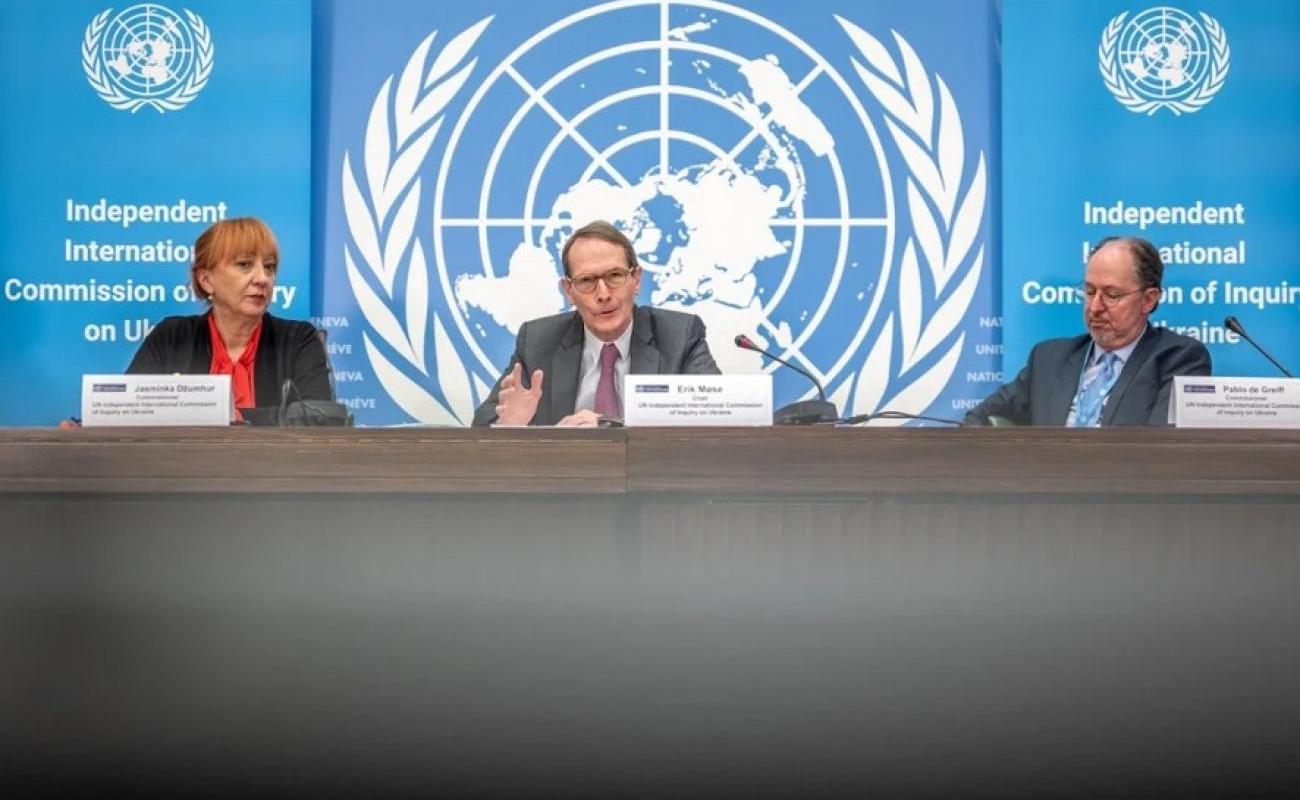ANALYSIS: Marking Two Years of Russian Violations of Humanitarian Law in Ukraine

Of almost 350 statements on Ukraine made by the UN press center since February 2022, almost half refer to attacks on civilian targets or other breaches of humanitarian law by Moscow’s forces
The UN’s Independent International Commission of Inquiry on Ukraine, set up in March 2022 following Russia’s full-scale invasion, gave its latest report on the situation in Ukraine to the General Assembly on Oct. 19, 2023.
It prefaced its findings with censure of the Russian Federation for a lack of cooperation, having ignored 19 separate formal requests for meetings, access and information.
This contrasted markedly with the level of cooperation given by Ukraine during which large quantities of documentary, photographic and video evidence were handed over and facilitated the commission in conducting over 450 individual interviews in 32 separate locations within 39 regions.
Moscow’s reticence was perhaps understandable as the report clearly quotes unequivocal evidence of widespread violations of international humanitarian law by Russia’s armed forces.
In the words of the commission:
“The collected evidence further shows that Russian authorities have committed the war crimes of willful killing, torture, rape and other sexual violence, and the deportation of children to the Russian Federation.”
A press release from the UN’s Human Rights Monitoring Mission in Ukraine (HRMMU) at the end of November 2023 estimated that at least 10,000 civilians, including more than 560 children had been killed, while over 18,500, including more than 1,700 children, had been injured since Russia’s full-scale invasion began. It warns, however, that even those horrendous totals may be a conservative assessment.
The UN said that most of the recorded civilian casualties recorded were due to explosive weapons with a wide impact area, including shelling from heavy artillery and multiple launch rocket systems, as well as missile and air strikes.
Child abductions
The UN Committee on the Rights of the Child reported on Feb. 8, strongly criticizing the forcible transfer and deportation of thousands of Ukrainian children to the Russian Federation “in violation of rights under the convention.” The committee was unable to place a figure on the likely numbers concerned because of lack of records and access to areas under Russian control.
According to the Ukrainian government, at least 20,000 children have been forcibly deported to Russia, although the report thought that the true figure could be much higher. The committee also did not accept the Russian claim that it had assisted over 700,000 children to flee to Russia in search of safe refuge.
The committee found that many Ukrainian children were being given Russian citizenship and, thereby, being deprived of their Ukrainian nationality in violation of their rights under human rights conventions. It requested Russia to provide the precise number of children taken from Ukraine and about the whereabouts of each child.
The Kremlin’s response was that “the Russian Federation would not consider itself obliged to fulfill recommendations which were not aimed at fulfilling the rights of children in Russia, but were biased and sought to interfere in the affairs of the sovereign state.”
Infrastructure
According to data provided by Ukraine’s State Research Institute for Building Structures in November 2023, almost 160,000 buildings and structures have been damaged or destroyed, including almost 20,000 high-rise buildings.
In seeking to assess the costs involved, the buildings need to be fully assessed and an objective decision made as to whether each has been effectively destroyed and needs to be demolished, or can be repaired. For example, it might be possible in the short to medium term to use the habitable parts of damaged buildings if safe to do so.
Estimates, most made in the middle of 2023, vary widely, from the US Aid funded work undertaken by Kyiv’s School of Economics that suggested a bill of $400 billion, to as high as $1 trillion and upwards. The war is ongoing so no doubt the bill will continue to grow until it is over.
Cultural infrastructure
It was estimated in January that more than 1,900 objects of cultural infrastructure have been damaged or destroyed in Ukraine – mostly part of an intentional tactic to destroy Ukrainian culture. These have included:
- 306 cultural heritage monuments;
- 923 social and sporting club establishments;
- 681 libraries;
- 145 art education institutions;
- 106 museums and galleries;
- 35 theaters, cinemas and philharmonic halls;
- 14 parks, zoos, reserves;
- 3 circuses.
Greatest losses and damage have been sustained in the Donetsk, Kherson, Kharkiv, Kyiv, Mykolaiv, Luhansk and Zaporizhzhia regions, as well as the capital city of Kyiv.
With this in mind, Kyiv Post has reviewed the events over the last two years in an attempt to mark this terrible anniversary by reminding its readers of the levels of pain and suffering Russia has inflicted on innocent Ukrainians and the extent that it has trampled over every vestige of international humanitarian law.
Our findings by way of a day-by-day digest of Moscow’s crimes against the citizens of Ukraine will be published over the coming few weeks.
